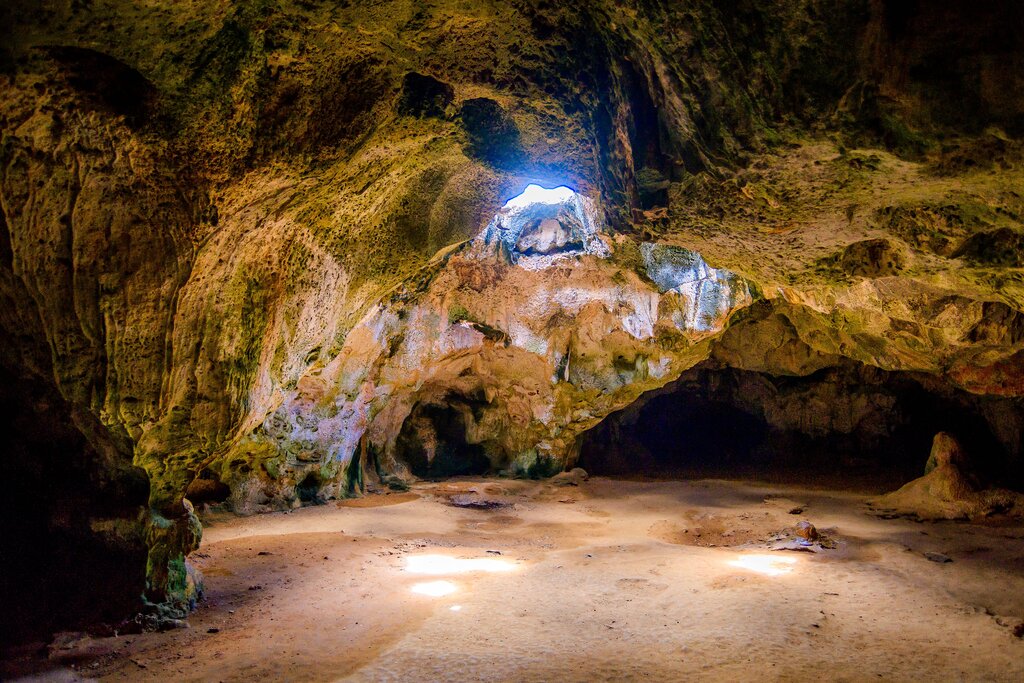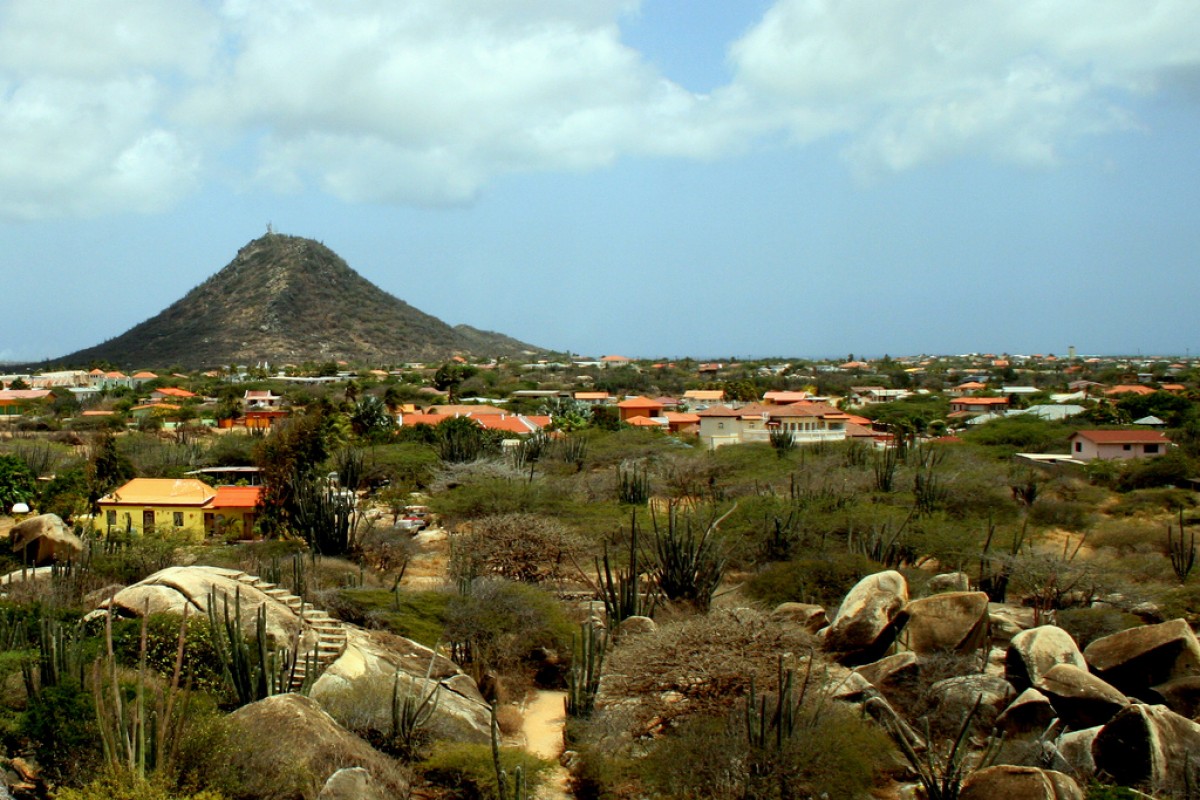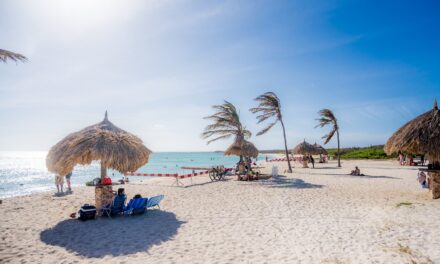Introduction to Arikok National Park
Nestled in the heart of Aruba, Arikok National Park is a sprawling sanctuary that spans nearly 20% of the island’s land area. This park is a microcosm of Aruba’s diverse ecosystems, showcasing everything from rugged coastlines and arid deserts to lush green valleys and historical sites. Established in 2000, Arikok National Park aims to preserve the unique flora, fauna, and cultural heritage of Aruba, making it a must-visit destination for nature enthusiasts, hikers, and anyone looking to explore the natural beauty of the island.

Top Attractions in the Park
- Fontein Cave:
- History and Geology: Fontein Cave is renowned for its ancient Arawak petroglyphs, which provide a glimpse into Aruba’s indigenous history. The limestone cave formations are also geologically fascinating.
- Visitor Experience: The cave is relatively easy to access and offers guided tours. Inside, the walls are adorned with ancient drawings, and visitors can explore various chambers, each with unique formations.
- Quadirikiri Cave:
- Natural Lighting: Unlike most caves, Quadirikiri Cave is naturally illuminated by sunlight filtering through openings in the ceiling. This creates a mystical atmosphere as light beams penetrate the darkness.
- Exploration Tips: Visitors can explore two large chambers connected by a tunnel. The cave is home to a colony of bats, adding to its intrigue. Guided tours are recommended to learn about the cave’s history and geology.

- Dos Playa:
- Beach Description: Dos Playa features two secluded coves with dramatic cliffs and strong waves. It’s a picturesque spot, ideal for photography and picnics, although swimming can be dangerous due to the currents.
- Activities: This beach is perfect for those looking to escape the more crowded tourist spots. It’s also a great place to watch the powerful waves crash against the shore.
- Jamanota Hilltop:
-
- Highest Point in Aruba: Standing at 188 meters (617 feet), Jamanota Hilltop offers panoramic views of the island. On a clear day, you can see all the way to Venezuela.
- Hiking Information: The hike to the summit is moderate and can be done in about an hour. It’s advisable to go early in the morning to avoid the heat and to bring plenty of water.
-
Flora and Fauna
Arikok National Park is a biodiversity hotspot, home to several species found nowhere else in the world. Here’s what you can expect to see:
- Fauna:
- Aruban Whiptail Lizard: This colorful lizard is endemic to Aruba and often seen basking on rocks.
- Burrowing Owl (Shoco): Aruba’s national bird, the Shoco, is a small owl that nests in burrows and is a delight to spot.
- Aruban Rattlesnake (Cascabel): This rare and venomous snake is native to the island but sightings are rare due to their elusive nature.

- Flora:
- Divi-Divi Trees: Known for their distinctive bent shapes due to the constant trade winds, these trees are iconic to Aruba’s landscape.
- Cacti: Various species of cacti dominate the arid landscape, including the towering Kadushi and the prickly Pear.
- Aloe Vera: Widely used for its medicinal properties, Aloe Vera plants are scattered throughout the park.
Visitor Information
- Entrance Fees: The park charges a nominal fee of $11 for adults. Children under 17 and local residents can enter for free, making it an accessible destination for families and locals.
- Guided Tours: To get the most out of your visit, consider joining a guided tour. Options include hiking tours, bird-watching expeditions, and historical tours that delve into the cultural heritage of the area.
- Opening Hours: The park is open daily from 8:00 AM to 4:00 PM. It’s advisable to arrive early to beat the heat and crowds.
Tips for Visitors
- Preparation: Bring plenty of water, sunscreen, a hat, and sturdy shoes suitable for hiking. The terrain can be rocky and uneven.
- Respect Nature: Stay on marked trails to protect the delicate ecosystems and avoid disturbing wildlife.
- Photography: Don’t forget your camera. Early morning and late afternoon provide the best lighting for capturing the park’s stunning landscapes.
Unique Experiences in Arikok National Park
- Guided Night Tours: Experience the park in a different light—literally—by joining a guided night tour. You can observe nocturnal wildlife and enjoy stargazing in a pollution-free sky.
- Cultural Heritage Sites: Within the park, you’ll find remnants of Aruba’s early agricultural past, including old plantation houses and farmland ruins, offering a glimpse into the island’s history.
- Nature Conservation Programs: Participate in or learn about ongoing conservation efforts to protect Aruba’s unique biodiversity. The park occasionally offers volunteer opportunities for those interested in contributing to preservation efforts.
Environmental Conservation Efforts
Arikok National Park is committed to environmental conservation. The park management implements various initiatives to protect the ecosystems and wildlife. Efforts include:
- Wildlife Monitoring: Regular monitoring of wildlife populations, particularly endangered species like the Aruban rattlesnake and burrowing owl.
- Habitat Restoration: Programs to restore native vegetation and combat invasive species.
- Education and Outreach: The park offers educational programs for schools and visitors to raise awareness about the importance of conservation.
Visitor Testimonials
- Jane D., USA: “Arikok National Park was the highlight of our trip to Aruba. The diversity of landscapes and the guided tour of Fontein Cave were unforgettable experiences.”
- Carlos M., Brazil: “Hiking to the top of Jamanota Hill was challenging but the views were worth every step. We could see the entire island and even the coast of Venezuela!”
Conclusion
Arikok National Park is more than just a protected area; it’s a vibrant testament to Aruba’s natural beauty and cultural heritage. Whether you’re an avid hiker, a nature enthusiast, or a history buff, the park offers something for everyone. Plan your visit to Arikok National Park and discover the wild heart of Aruba.





